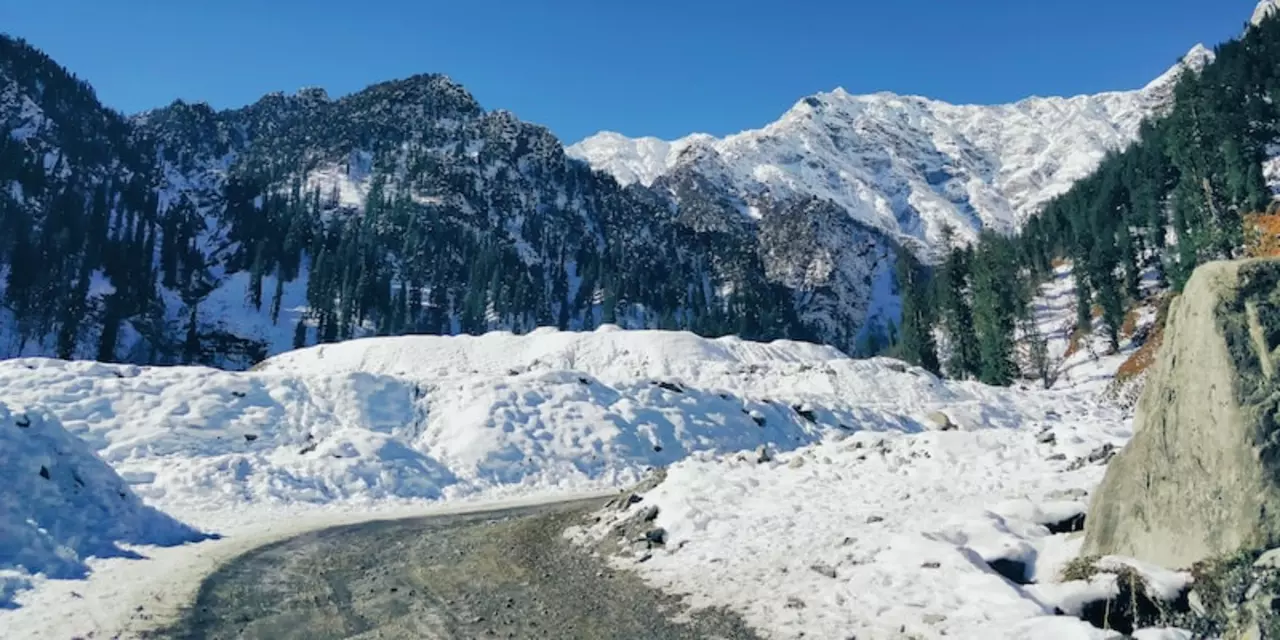Exploring the Social and Political Factors Behind the Perception of Bihar and Uttar Pradesh as North India
The northern region of India, popularly known as North India, is one of the most populous and diverse regions in the world. It is home to a variety of cultures and beliefs, with many distinct languages and dialects spoken. It is often considered to be the cultural and political heart of India, and is home to some of the country's most iconic sites and cities, including Delhi, the capital. Despite this, two of the region's most populous states, Bihar and Uttar Pradesh, are often overlooked in terms of media coverage and representation. So why are Bihar and Uttar Pradesh considered part of North India?
At the heart of this perception is the social and political factors that define the region. North India is known for its strong sense of tradition, culture and history. Both Bihar and Uttar Pradesh are steeped in this history, with many of India's iconic sites and monuments found in the two states. From the Taj Mahal to Varanasi, the two states are home to some of the most important sites in Indian history. This shared heritage gives both Bihar and Uttar Pradesh a strong sense of identity, which has helped to shape the perception of the region as a whole.
Politics is also a major factor in the perception of Bihar and Uttar Pradesh as part of North India. The two states have traditionally been a major part of the national political landscape, with their leaders playing a significant role in the formation of the Indian national identity. This has resulted in a strong sense of shared political identity between the two states and the rest of North India. This political unity has helped to further solidify the perception of Bihar and Uttar Pradesh as part of the larger region.
Finally, there is the economic factor. North India is one of the most economically developed regions in India, and both Bihar and Uttar Pradesh are major contributors to this development. The two states are home to a large number of industries, from textiles to agriculture, and the resulting economic growth has helped to further strengthen the perception of the two states as part of North India.
In conclusion, there are a variety of social, political and economic factors that have contributed to the perception of Bihar and Uttar Pradesh as part of North India. From their shared cultural heritage to their important political and economic roles, the two states have become integral parts of the region, and it is this integration that has helped to shape the perception of the region as a whole.
Examining the Role of Media in Shaping the Narrative of Bihar and Uttar Pradesh as North India
For centuries, Bihar and Uttar Pradesh (UP) have been at the forefront of India’s cultural and historical legacy. As two of the most populous and influential states in the country, the role of Bihar and UP in shaping the narrative of India is undeniable. However, in recent years, the media has increasingly portrayed these states as part of “north India”, a region of the country that includes many other states such as Himachal Pradesh, Haryana, Punjab, and Rajasthan.
The media’s narrative of north India has been largely informed by its focus on the Hindi-speaking population of the region, with Bihar and UP being the main focus of many news stories. This has led to the notion that these two states are the “core” of north India, while other states are peripheral. This narrative has been further reinforced by the media’s portrayal of the region as a unified whole, often glossing over the cultural and linguistic diversity that exists within it.
The media’s portrayal of Bihar and UP as north India has had a significant impact on how these states are perceived by the rest of the country. It has helped to create a unifying identity for the region that many people have come to accept as fact. This has in turn created a false impression of the region as a homogenous entity, obscuring the unique cultural and linguistic differences that exist within it.
The media’s portrayal of Bihar and UP as north India has also been influenced by the political landscape of the region. With the rise of BJP to power in the state, the media has increasingly framed these states as a bastion of Hindu nationalism, further reinforcing the notion of north India as a unified identity. This narrative has been used to justify the exclusion of other communities and cultures from the region, creating a false sense of homogeneity.
The media’s narrative of north India has had a profound impact on the perception of Bihar and UP, and on the people who live in these states. While it is undeniable that the region is home to a rich cultural and linguistic diversity, the media’s portrayal of the region has neglected this fact. This has led to a false perception of the region as a homogenous entity, obscuring the unique cultural and linguistic differences that exist within it.
The media’s portrayal of Bihar and UP as part of north India is a reflection of the changing political landscape of the region. While it is undeniable that the region has a rich cultural and linguistic diversity, the media’s portrayal of the region as a unified whole has created a false sense of homogeneity. It is important for the media to recognize the unique cultural and linguistic diversity of the region, and to present it in a balanced and accurate manner.
Investigating the Cultural Aspects of Bihar and Uttar Pradesh that Make Them Part of North India
Bihar and Uttar Pradesh are two of the most populous states in India, and are commonly referred to as being part of North India. This is because they share many cultural aspects with the other northern states. Here, we will be investigating the cultural aspects of Bihar and Uttar Pradesh that make them part of North India.
One of the most important cultural aspects shared between Bihar and Uttar Pradesh and other northern states is the language. Both states are located in the Hindi belt, meaning that Hindi is the predominant language spoken in both states. Other languages, such as Urdu and Punjabi, are also spoken in Bihar and Uttar Pradesh, but Hindi is the most widely spoken language. This shared language is one of the reasons why both states are considered part of North India.
Another cultural aspect that is shared between Bihar and Uttar Pradesh and other northern states is the cuisine. Both states share many of the same traditional dishes, such as roti, dal, and curry. The cuisine in both states also uses many of the same ingredients, such as lentils, spices, and vegetables. This shared cuisine is another reason why both states are considered part of North India.
In addition to language and cuisine, Bihar and Uttar Pradesh also share many of the same religious beliefs. Both states are predominantly Hindu, and the two states have many of the same religious traditions and beliefs. This shared religious tradition is yet another reason why both states are considered part of North India.
Finally, Bihar and Uttar Pradesh also share many of the same customs and traditions. Both states celebrate many of the same festivals, such as Diwali and Holi, and have many of the same cultural practices. This shared culture is another reason why both states are considered part of North India.
In conclusion, Bihar and Uttar Pradesh are both considered part of North India due to their shared language, cuisine, religious beliefs, and customs and traditions. These cultural aspects are what make Bihar and Uttar Pradesh part of North India, and are what unites them with the other northern states.
Analyzing the Economic and Geographical Reasons for Bihar and Uttar Pradesh Being Classified as North India
Bihar and Uttar Pradesh are two of the largest states in India, both in terms of population and size. They are also the most populous states in the country, with a combined population of over 500 million people. It is no surprise then that these two states are often referred to as the "heart of India". But why are Bihar and UP considered to be part of North India?
The answer lies in both the geography and economics of the region. Geographically speaking, Bihar and Uttar Pradesh are located in the northern part of the country. This means that they are closer to the Himalayas than other parts of India. This makes them part of the northern region of the subcontinent. In addition to this, they are home to the famous Ganges and Yamuna rivers, which form the core of the Hindu faith.
Economically, Bihar and UP are some of the most important states in the Indian economy. They are home to several major industries, including agriculture, textiles, and manufacturing. Many of the major cities in these two states are also important industrial centers. This has made them vital to the economic growth of the country. In addition, the states have a large labor force that is mainly employed in the agricultural sector.
These two states are also important in terms of culture and history. The cultures of Bihar and Uttar Pradesh are both unique and influential. They have been the cradle of some of the most influential religions in the world, including Hinduism, Buddhism, and Jainism. The famous Taj Mahal, which is situated in Agra, is also located in this region. This makes the region an important part of India's rich cultural heritage.
Therefore, it is easy to understand why Bihar and Uttar Pradesh are considered part of North India. They are both geographically and economically important, and have a strong cultural heritage. This makes them integral to the identity of India as a whole. In addition, the region is an important part of the Indian economy, and it is essential for the growth and development of the country.



